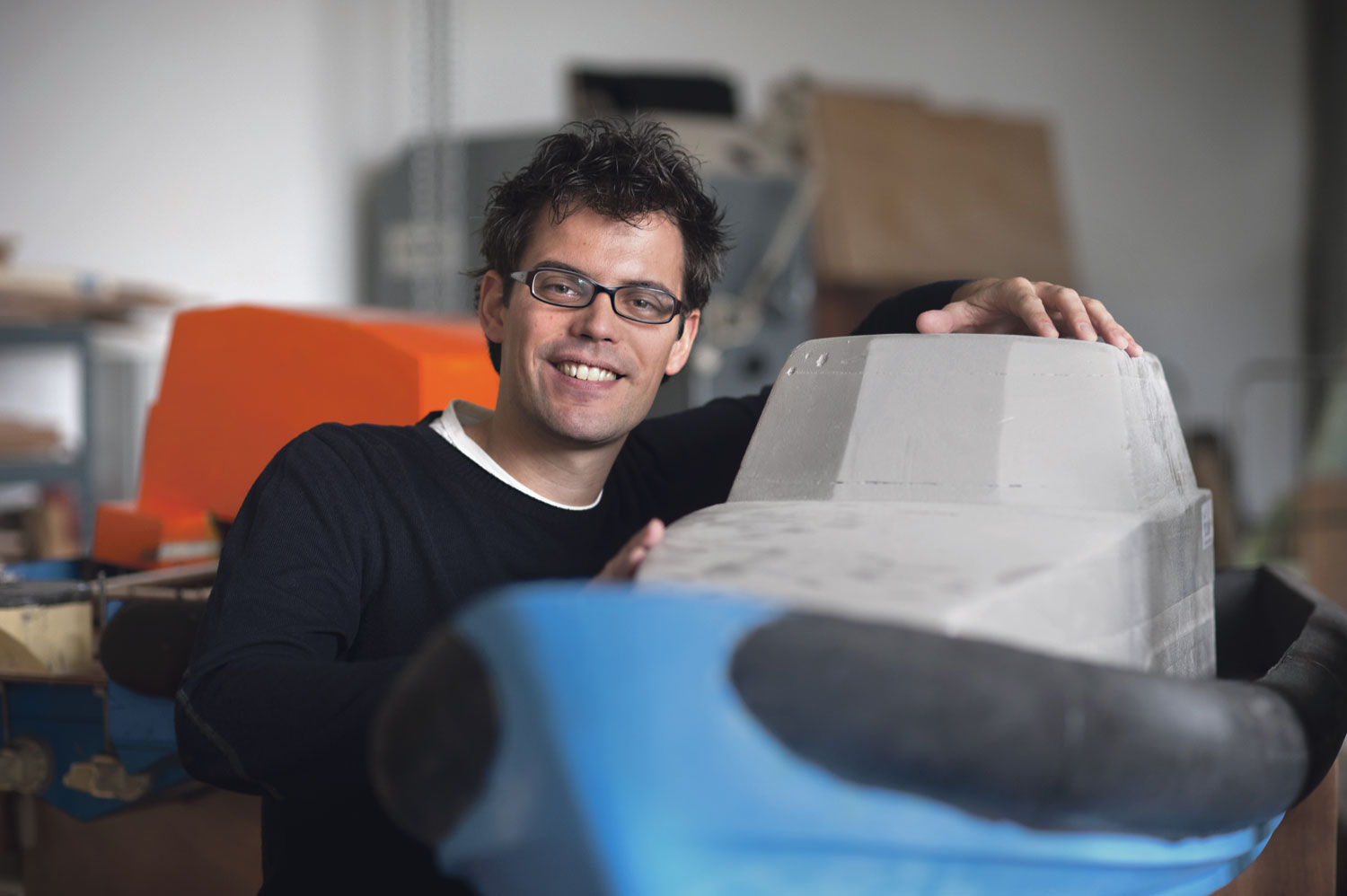These small boats come to the rescue at high speeds – they can sail as fast as 35 knots. However, when the sea is rough and the waves high, these boats cannot navigate very quickly. The boats encounter waves from the front, called head waves, which lift the boat up and make it fall again behind the wave. Large acceleration occurs and causes great inconvenience for the crew, who can even be injured from the blows.
The operator therefore usually temporarily reduces the forward speed of the boat when there are rough head waves, which he does according to estimates based on experience or personal feelings about how rough the sea is. When he expects a wave to be high, and to cause an unacceptably large vertical acceleration peak, the operator temporarily reduces the speed. This is called thrust control. Sometimes they estimate correctly, sometimes they don’t. It could happen that a wave is higher or less high than expected, with the result being that the wave hits the boat hard or forces the operator to reduce speed, when in fact it was unnecessary to do so.
I’m therefore working on a thrust control system for fast ships – not only for ships like KNRM’s search and rescue vessels but also pilot boats, interceptors and patrol vessels. The control system anticipates the magnitude of vertical acceleration peaks in real-time and reduces the forward speed of the vessels if necessary. This must result in an increase of operability. In future the system should use a state of the art wave measuring system, based on radar, lidar or laser. However, such a system does not yet exist, but hopefully radar specialists will create one in the near future. If so, it could be implemented in the thrust control system I am working on.
My system uses predictions of the ship’s response for the coming 2 to 6 seconds. Subsequently, the predictive control system calculates what the impact will be on the boat and whether it is necessary to reduce speed. It seems that a boat could sail 5 knots faster with my system. During the coming year I will conduct tests in our 142 metre-long towing tank. It will be very exciting to see if my thrust control system also works in model scale.
I know that when a KNRM rescue boat hits a wave too hard, the operator must buy a crate of beer for his shipmates. Hopefully, thanks to the system I’m currently developing, that will soon no longer be necessary.”
The biggest news for Dr Remco Groenenberg, of the Delft Geothermal Project DAP, was the large number of participants who attended the Delft Geothermal Congress, held last Monday: 270. His fellow organiser, Chris den Boer, a geosciences engineering student, however was most impressed by the drilling at Duijvestijn, a market garden in Pijnacker, near Delft. From a depth of 2300 metres, 130 cubic meters per hour were harvested at 68°C.
According to one of the speakers, Guus Willemsen (team leader of the deep underground section at IF technology), the Netherlands has good prospects for geothermal projects. This is not because hot water layers are close to the surface (in fact they’re far down, at two to four kilometres deep), but rather because the geology is exceptionally well charted. Oil companies’ systematic explorations for oil and gas over the past fifty years, and the Ministry of Economic Affairs’ regulations permitting the sharing of data, have resulted in detailed underground maps. These same maps can be used to locate the most successful spots for hot water drilling. Willemse even sees possibilities for geothermal electricity production, which requires extremely hot water resources from about four kilometres deep and temperatures above 130°C, that are then be used in a Rankine cycle to convert heat into work.
Closer to home the design and business-case for the Delft geothermal project are nearly complete. The project will involve drilling for hot water at a depth of 2100 metres, which in turn will provide heat for TU offices, student houses and possibly other customers of the district heating system. Investors Eneco and Energie Beheer Nederland (EBN) are expected to take a decision on investments sometime next spring. The contract these companies signed with DAP and TU Delft also allows for experiments to be conducted.



Comments are closed.